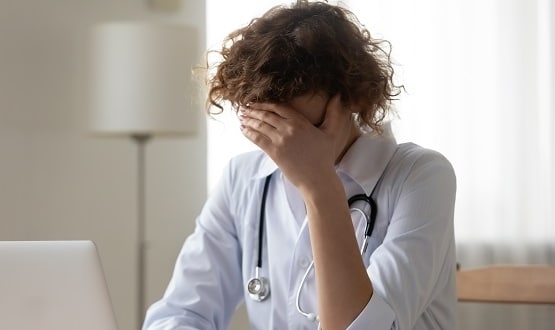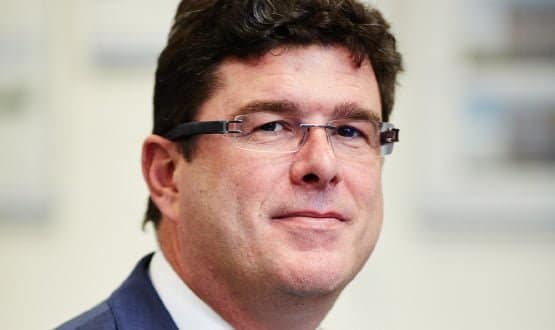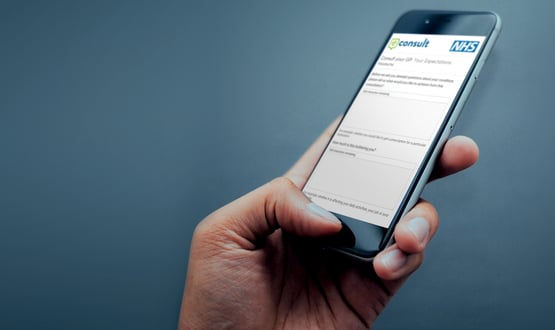GP burnout – is tech to blame for mounting workloads?

During the Covid-19 pandemic there has been wide-ranging discussions on the link between GP burnout and the increased use of digital services. Many have raised concerns about technology adding to workloads, while for others technology improves patient access. Andrea Downey looks at how going digital-first has impacted GPs workload.
The use of technology in primary care was once a niche topic to report on, but since Covid-19 hit and brought with it the need to go digital-first it’s been making national headlines.
As the country moves out of the pandemic there was an expectation in-person GP services would return to normal, but that hasn’t been the case. Recent data from NHS Digital revealed just 58% of patients were seen face-to-face in August, the first full month since pandemic restrictions were eased.
This compares to 54% in January during a full lockdown, and 80% before the pandemic struck. There’s been a marked change in how patients are accessing their GP, and the services GPs are offering.
In a bid to increase face-to-face appointments the government today (October 14) unveiled a £250m winter rescue package for GPs. The funding is expected to be put towards increasing access to GPs, including hiring extra locum staff to provide more same-day appointments.
Practices that do not provide “appropriate” levels of face-to-face appointments will not be able to access the additional funding, according to a statement from NHS England.
The reduction in face-to-face appointments has sparked national media campaigns calling for NHS England to ensure GPs are prioritising seeing patients in person – but a recent poll of GPs by Pulse found 80% do not believe a return to pre-pandemic levels is necessary.
Responding to NHS Digital’s statistics and concerns surrounding digital services, Professor Martin Marshall, chair of the Royal College of GPs (RCGPs), said: “Face to face consulting will always be an essential part of general practice, and as we move out of the pandemic, we want to see a blended approach with decisions about how care is delivered being a joint one between GP practices and their patients.”
Change processes, not tech
Calls for a blended approach to how care is delivered is a solid indication that technology is here to stay in many GP practices. For Dr Murray Ellender, a practicing GP and chief executive of online consultation provider eConsult, and Dr Osman Bhatti, GP and CCIO for NHS North East London Clinical Commissioning Group (CCG), this is not a bad thing.
Speaking to Digital Health News they both acknowledged the pressures technology had caused GPs during the pandemic, but agreed practice processes were the root cause of excess workload.
“The technology is not the problem, it’s not an argument of ‘should we do digital or not?’ It’s much more about the way that practices use the technology,” Dr Ellender says.
“You need everyone in a practice on board, everyone needs to be engaged in the change. If you’re opening up a new route of entry into the practice you need to switch something off.
“It’s a bit like taps, if you’re opening up the online tap you need to turn down the phone, for example.”
He instead suggests the system change that comes with digital services has been underinvested in nationally, whether it be through training, funding or extra staff.
Bhatti also argues that processes need to change to better support digital services.
“Practices need to adapt their process so that they’re not doing face-to-face, telephone and online, their online is replacing telephone or face-to-face, so it’s not additional work it’s the same amount of work,” he tells Digital Health News.
“Although, demand has increased, so it’s a double-edged sword in that sense.”
Overall he says the use of technology has been “positive” but it’s not something that can be qualitatively assessed as practices are often operating at different levels of digital maturity.
“It’s been a positive experience if you balance things out, because things we were planning from a digital perspective we’ve been able to accelerate through,” he adds.
“That is all the way from online consultations, online registrations, to being able to have meetings online.
“We’ve had to invest quite heavily in change management to support that and not to force it on people, but to allow them to move at their own pace, which is really tricky.”
Bhatti said the next steps as the country continues to return to normal post-pandemic is to “sift through” what clinicians find easy to use and what patients find accessible.
Switching off services
In response to GPs reporting feeling overwhelmed by demand for online services, eConsult introduced the ability to turn off its online consultation platform.
Between March and June 2020 the online provider doubled the amount of practices it was used in from 1,500 to more than 3,000. On top of that, in the year from February 2020 to February 2021, online consults through its platform increased from 120,000 a month to 1.2 million a month.
Dr Ellender says it marks a “clear shift to digital” but recognised it can add strain alongside the mounting pressure already on GPs to keep up with demand.
“Some GPs are saying ‘Actually, it’s just too much at the moment, can I at least have some control over it?’ And that’s fair enough,” he tells Digital Health News.
“So, this is us listening to the customer. In principle I believe the patient should have access to this stuff 24 hours a day, but actually in practise if your particular practice isn’t coping let’s just limit it to your opening hours.
“Rather than fight against the tide and say it should be available 24/7, it’s about recognising that actually general practice is in quite a difficult place at the moment, and they are overwhelmed for lots of different reasons.”
Dr Ellender says the weekend is the most common time GPs are switching off their online consultation services with eConsult, followed by occasionally overnight. Despite this he believes digital is here to stay and suggests other GP suppliers should be more flexible with their services.
“There’s certainly enough usage out there now that GPs won’t ever want to do without it,” he adds.
“Practices have historically had control of the number of face-to-face or phone slots they can offer, so why should digital be different?
“All suppliers need to be playing the slightly longer game, which is that digital is definitely the way forward. We’ve seen it in other industries, so for now let’s just work on that transformation of how people interact with their GP. But bring the practices along with us because if you’re just making them feel like this is extra work they have to do, you’re just going to turn them off it.”
[themify_box icon=”info” color=”gray”]
How patients used digital GP services during Covid-19
TPP
Telephone consultations increased by more than 2m between June 2019 and June 2021, from 3,000,239 to 5,653,564.
“Telephone appointments have largely remained the preferred method for patients contacting their GP since the start of the pandemic. We’ve also seen large numbers of patients using our app, Airmid, to communicate with their care providers,” a spokesperson said.
askmyGP
Unique patient registrations between June 2020 – June 2021 rose 117%, or 836,676.
Patient preferences for how to contact their GP:
- Face-to-face – 9%
- Message – 35%
- Telephone – 50%
- Video – 0.3%
“Where something needs to be discussed, it’s almost always by phone and while video has a place, it’s a small one. Messaging is very popular as it can be done at a convenient time without having to arrange both parties for an appointment,” Harry Longman, CEO of askmyGP.
[/themify_box]
Staffing levels
For Bhatti the other major player in GP burnout and difficulties keeping up with demand, is staff shortages.
While technology has played a major role in increasing patient access to GPs, it can add extra pressure on an already overstretched workforce.
“It’s all well and good having this technology and easier access to GPs, but if you don’t have the GPs then you can’t provide the best access that digital can offer,” Bhatti tells Digital Health News.
“That, if nothing else, has been the reason capacity has struggled.”
According to the British Medical Association (BMA) the GP workforce in England has shrunk by 1,904 since 2015.
In February 2020 the government pledged to recruit an additional 6,000 GPs by 2024 to counter pressures on the workforce, yet BMA figures suggest between June 2020 and June 2021 the number of GPs reduced by 924 doctors.
“This decrease means that despite an increase of 1,189 salaried and locum GPs over the same period, the number of qualified GPs only increased by 265 in this time,” the BMA reported.
“In FTE terms (37.5 hours per week), the number of fully qualified FTE GPs has only increased by 190 (to 27,499) over the past year.”
Prof. Marshall of the RCGPs also called for a boost to staffing levels to counter the “undoable” workload faced by GPs.
According to Marshall the narrative that remote consultations are substandard is “concerning”, adding that “effective digital triage can also help ensure patients receive the care most appropriate for their needs”.
“Ultimately we need more GPs and other members of the practice team to deliver the care our patients need,” he says.
Digital a ‘key player’
Graham Kendall, director of the Digital Healthcare Council which represents online care providers, tells Digital Health News technology has an important part to play in managing the “incoming deluge” of patients.
NHS waitlists are already at a record high 5.4million, with a further 6 million expected to be added to that list while the health service grapples with recovering from the pandemic.
Add increasing staff burnout into the mix and Kendall says it’s “essential that we provide GPs with as much support as possible”.
“Over the past 18 months, we’ve seen GPs seize the opportunity with digital and drive uptake of online triage and consultations so that they can continue delivering care within the constraints of the pandemic,” he told Digital Health News.
“However, considerable challenges still remain, and it’s important to recognise that digital has a key role in improving capacity and alleviating pressure.
“Although we understand why some are concerned that the 24/7 nature of the tools is adding to the pressure, we believe that shutting the door to patients at nights and weekends is a short-term and potentially dangerous way to manage the demand.
“If we are actually able to tackle the incoming deluge of patients, we need to ensure we have the tools in place to assess the extent of demand so that we can then match resource accordingly.”
The Digital Healthcare Council provided a series of case studies to emphasise the benefits of digital services:
[themify_box icon=”info” color=”gray”]
Klinik Healthcare Solutions
The Haxby Group in York has been using Klinik’s AI triage and patient flow management technology since 2019. It now helps the practice deal with 90,000-plus people across Yorkshire and Humberside, according to Dr Thomas Patel-Campbell, CCIO at the Group.
“Our GPs are under severe pressure. With Klinik, often requests don’t have to go through a GP,” said Thomas. “It can help us field enquiries that can be dealt with better elsewhere, such as sick notes or test results that can be dealt with by others, or medication requests that can be dealt with by pharmacists,” he said.
Klinik uses artificial intelligence to analyse information provided by patients in online triage forms or over the phone, indicating the urgency and priority for each case.
For the months of June, July and August at Haxby Group practices there were:
- 42,000 enquiries through Klinik
- 60% were online enquiries
- 40% were via the phone
- 94% of patients rated the service good or excellent
“Traditional thinking suggests that broadening access means increasing demand, but that has not been borne out in practice. It is actually very predictable,” Dr Patel-Campbell adds.
“We have much more accurate information on the time and volume of demand. We know how much resource we need at particular times of day, and we can see what type of care people need.”
[/themify_box]
[themify_box icon=”info” color=”gray”]
Livi
Around 8 in 10 patients within North Tyneside NHS CCG are happy with the service they’ve received from Livi, according to a survey.
The CCG ran a 12-month pilot of the online provider from July 2020 in a bid to provide more choice for patients when accessing a GP.
Some 222,000 patients across 25 practices had access to GP appointments, from 7am until 10pm during the week, and from 8am until 4pm at weekends.
A survey of patients following the pilot found 62% would rate the service very good, with 17% rating it good. Nearly 20% of respondents who used Livi would otherwise have gone to A&E or an urgent care centre.
Richard Scott, clinical chair, North Tyneside CCG, said: “With health services being very busy at the moment, it’s important to give patients choice in the way that they can access a GP that’s convenient to them.
“Supporting increased flexibility and better access to high-quality healthcare remains our priority and it’s been encouraging to hear the positive feedback from patients using this online GP service.”
[/themify_box]
[themify_box icon=”info” color=”gray”]
askmyGP
The Grove Medical Centre in Swansea implemented askmyGP in April 2020 after the practice team decided it was vital to have a triage system in place to maintain quality services.
They then began encouraging patients to use online services, as well as accessing the practice via the phone.
Dr Jack Williams, one of four GP partners at The Grove, said: “For us, it’s not all about e-consulting. Yes, askmyGP allows us to e-consult, but the benefit for us is that it is a triage system with the capability to do an e-consult if we wish.
“We can respond to people with a message on the system, but we will still call the patient or conduct a patient examination if needed.”
Data from askmyGP suggests requests at The Grove are resolved on average 116 minutes after they are made. The data also provides visibility of demand.
“The visibility of demand that askmyGP offers has enabled us to rearrange rotas and match our capacity to that. This also helps with staff morale, as it means we can aim for all the staff being equally busy on different days.”
[/themify_box]





3 Comments
Yes totally agree to technology being responsible for GP burnout. We have less patients than 20 years ago but the workload is incredulous and all of it down to computers and technology. You used to be able to phone a department once and get an answer. You had a particular name. Everything is email which depersonalises and so everything gets passed from pillar to post. Things keep changing for no good reason. Change is not always good. Teams meetings, emails, econsult – none of this adds a personal touch.
econsults, put simply, are delayed work. it is more work that the current GP workload can do safely and a panacea that the government use to say they are doing something.
GP locums are a joke. 12 patients per session and an increased charge if a face to face ensues. Locums frequently ‘baby sit patients’ who end up mismanaged with unreal expectations. Locums need to up their game. We are desperately trying not to employ them.
econsults encourage the worried well to seek help, and effectively exclude disadvantaged patients. This is everything the NHS says it is against. It encourages defensive medicine.
They no doubt have a role but place the IT literate, who are frequently the least worrying group of patients, ahead in the queue to see us.
Admittedly not a digital issue per se, but there ARE no more locums and GPs to pay for. That is the whole point to the BMAs concerns. The government might as well as say they’re putting extra funding to supply more unicorns.
Comments are closed.